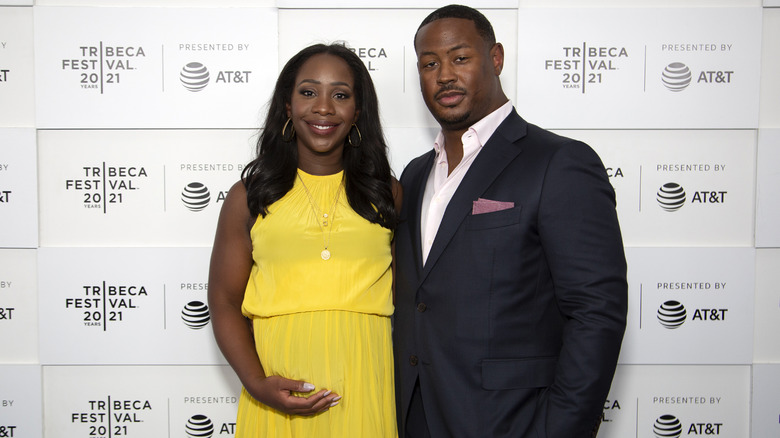Inside The Chaotic Birth Of CNN Anchor Abby Phillip's First Child
When faced with worsening maternal mortality statistics and the continued impacts of the COVID-19 pandemic on the healthcare system, Abby Phillip made a choice that more and more expectant mothers are making: She opted to skip the hospital and give birth at home. Surrounded by her husband, mother, midwife, and doula, the CNN anchor spent 12 hours in labor before giving birth to daughter Naomi in April 2021. She even cooked a meal in between contractions! While the birth itself went relatively smoothly, the journey to that home birth was anything but.
"Never in a million years would I have thought that I — a huge believer in modern medicine and someone who takes no unnecessary risks with my health — would end up giving birth at home," Phillip wrote in an opinion piece for CNN. Anxiety and fear at the thought of finding herself in a hospital, particularly after her concerns were dismissed by her medical provider early on in her pregnancy, spurred Phillip to deviate from the standard birthing plan. While researching her options, she came across harrowing stats on everything from maternal mortality to the rate of medical interventions at the hospitals near her. "I had somehow come to view childbirth, something as old as humankind, as a life-threatening event," she wrote. She wanted to give birth "as free from unnecessary medical intervention as possible," and ultimately came to the conclusion that this just wasn't going to happen in a hospital setting.
More women are choosing home births in the US
In the United States, home births are on the rise. While there doesn't seem to be any singular reason for the uptick, Phillip's home birth story gives us plenty of insight into the dilemmas expectant parents face. In addition to her concerns over the increase in maternal mortality throughout the country, Phillip also wrote about the "perfunctory and isolating" care she received from doctors and the comparatively warm, attentive care she received from her birthing team. For the CNN anchor, home birth became "a model of care centered around the full picture of [her] life and health." Midwifes and doulas (yes, they're different) are typically present at home births to provide coaching, delivery assistance and other medical care, and emotional support. When Phillip began to bleed excessively after giving birth, her midwife and team worked quickly to stop the postpartum hemorrhage.
While Phillips clearly had an excellent home birth experience, the practice isn't the safest option in all cases — particularly for high-risk pregnancies. There can be significant drawbacks to home birth, including an increased risk of serious neurological problems. Ultimately, it comes down to doing your research and relying on sound medical advice. Take it from the experts: while the American College of Obstetricians and Gynecologists "believes that hospitals and accredited birth centers are the safest settings for birth, each woman has the right to make a medically informed decision about delivery."

